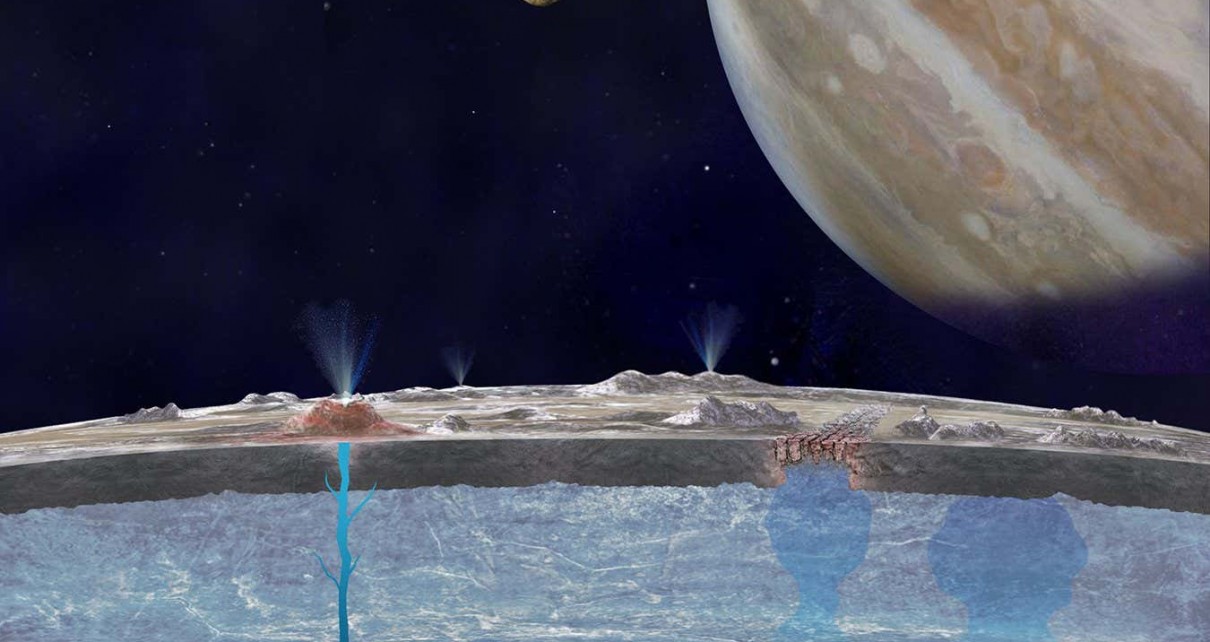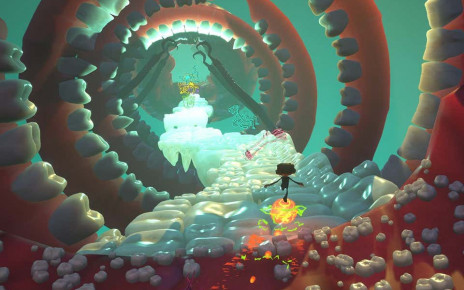[ad_1]

Artist’s impression of Europa (foreground) with Jupiter to the right and the moon Io in the distance.
NASA/JPL-Caltech
The ocean inside Jupiter’s moon Europa may be carbonated – not in the sense that it’s fizzy, but rather that it’s full of carbon dioxide. This idea, which comes from observations made with the James Webb Space Telescope (JWST), may be significant because carbon is an important element for life – making it a point in favour of habitable conditions beneath Europa’s icy shell.
Two groups independently analysed the JWST observations, and both found the same thing. Carbon dioxide seems to be seeping up to Europa’s icy surface. It is most abundant in an area called Tara Regio, where the ground is jumbled in what’s called chaos terrain – a mess of pits, ridges, cracks and domes. Tara Regio is considered to be a relatively young area of the surface, shaped by interactions with the underground ocean over the past several million years.
“The strongest signal is coming from the chaos terrain, which is geologically fresher than other areas of Europa,” says Geronimo Villanueva at NASA’s Goddard Space Flight Center in Maryland. “That means it’s highly likely that this material is new, and it has to come from the interior.” The concentrations were also raised in other areas of chaos terrain, and were not a match to what we’d expect if the carbon dioxide was brought to Europa by external sources, like comets.
This is good for the prospect of life beneath Europa’s icy shell, since all known living organisms rely on carbon as a building block for more complex molecules called organics. “Carbon is a biologically crucial element, so it’s important to figure out how it got to Europa, how much of it is there, and in what form it’s there,” says Samantha Trumbo at Cornell University in New York.
So far, JWST has only taken one look at Europa. With plans for three more views, we should eventually have a more complete picture of its surface, giving us an abundance of clues as to the makeup and potential habitability of its seas.
Journal references: Science, DOI:10.1126/science.adg4270, DOI:10.1126/science.adg4155
Topics:
[ad_2]
Source link




